When all you have is a hammer, everything looks like a nail. In our case, the hammer is a 3D printer. In addition to making prototypes and end-use parts for all of our customers, we regularly use our 3D printing capabilities to solve our own problems around the shop. From replacement parts to organizing the shop to quality of life improvements, we approach every problem with 3D printing in mind.

Wash Tank Nozzle
Our FDM 3D printers use a soluble support material to maintain the structure of parts during printing. After printing is complete, the support material must be removed in a heated, circulating bath of corrosive solvent. The solvent is circulated by a plastic nozzle, which remains submerged in the bath permanently. The nozzle is made of two halves with a gasket sandwiched in between. The gaskets kept failing on our nozzles and replacement parts are unavailable for these tanks, so we decided to make our own.
We were initially skeptical, as 3D printed parts usually don’t hold water very well, especially when subjected to pressure. But we’ve recently discovered some new print settings that create water-tight parts and prevent fluid from seeping in betwen layers. (More on this in the future!) The results were excellent. The replacement nozzles were actually more effective than the OEM parts and we’ve been running them without issue for more than three months.
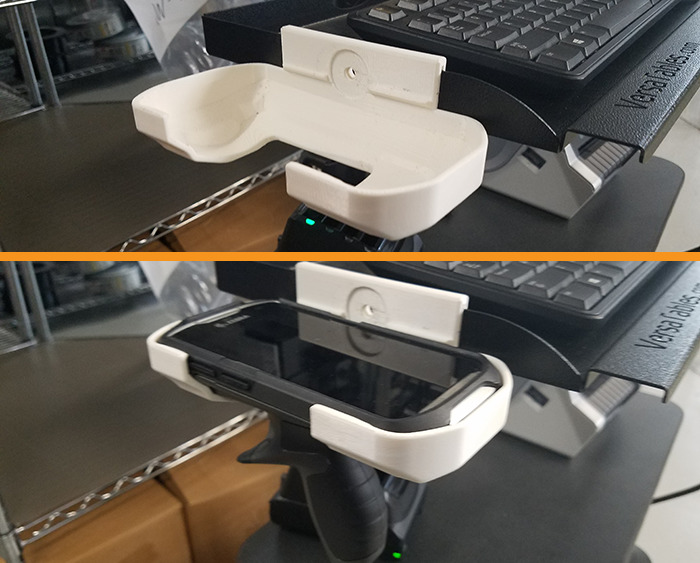
Inventory Gun Holder
Our inventory system uses a handheld scanner, but equipment that travels is easy to misplace. Our scanner was regularly left on shelves or worktables around the shop, so we gave it a home. We modeled a custom tray that perfectly fits the scanner, attaches right to the inventory workstation and allows it to be operated without being removed from the tray.
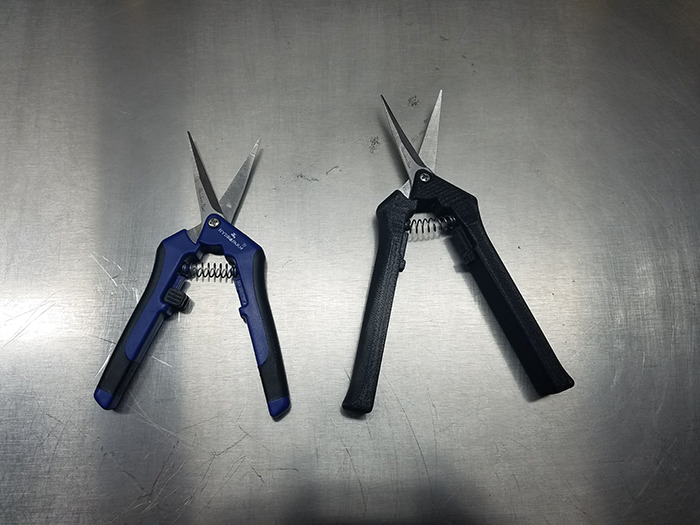
Custom Shear Handles
We do a lot of thermoforming at 3 Space, which means a lot of plastic trimming. We found a set of shears that are perfect for the job. We liked the way they cut and how durable they were. The only problem was that the handles were a little too short and using them for an entire day was uncomfortable. These were the best shears we could find, so we decided to just fix the problem ourselves. We 3D printed several new handle sets that were about an inch longer and a little more ergonomic than the originals. The longer handles made them more comfortable to hold and easier to trim with all day.
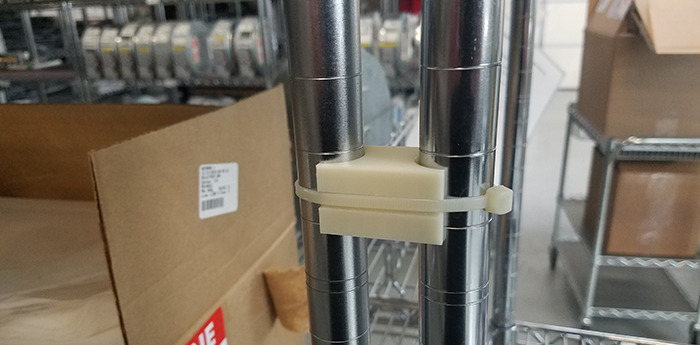
Shelving Spacers
We use an extensive shelving system to store 3D printing materials and other supplies. Over time the individual shelving units have meandered, either becoming too spaced-out or crowding each other. It’s a minor issue, but we like for our shop to be presentable. The solution was 3D printed spacers to go between each set of shelves, to keep them equally spaced and prevent them wandering apart. We even added a channel in the middle of the spacers for a zip tie to rest in.

De-Spooling Tool
We haven’t actually printed this part yet, but we will the next chance we get. When our FDM printers consider a canister of material “empty,” there’s actually several cubic inches of material still left on the spool. This translates to yards and yards of filament that needs to be un-spun by hand before we can re-use the spool- a job which can take several minutes. One of our team designed a custom tool that attaches to an electric drill and should let us de-spool material in just a few seconds. The idea is that we can wind the filament around it a few times, fire up the drill and the rest will follow. Once all of the filament is on the smaller spool, it twists apart and the material can be slid off and thrown in the recycling.
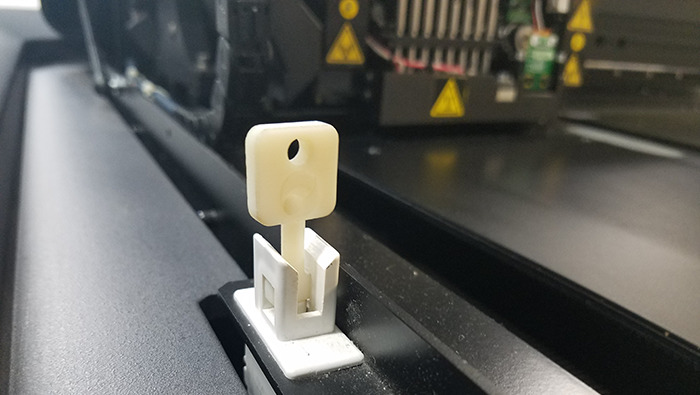
PolyJet Machine Keys
The print head on our Connex 500 PolyJet 3D printer will not move if the machine’s lid is open, but the head need to be moved for certain maintenance operations. In order to perform these operations, we have to insert small plastic keys to hold down a button and trick the machine into thinking the lid is closed. The keys are small and prone to getting lost or breaking, so we’ve 3D printed several backups on the Connex itself. But this example is kind of cheating since Stratasys intended the keys to be 3D printed and the STL file is included with the printer’s software.
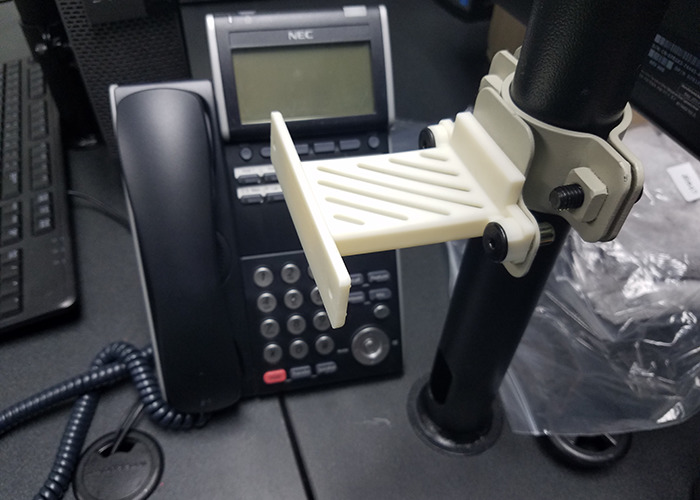
Custom Phone Mounts
Some of our workstations have limited desk space. To give our team more room to work, we’ve 3D printed custom mounts to get their phones off their desks. They attach to their neighbor’s monitor stand, which is offset from their own. We printed these out of our basic ABS-M30 material on FDM, which is more than sturdy enough for the job.
3D Printing at 3 Space
If we know one thing, it’s 3D printing. We’ve used it to solve hundreds of problems for our customers. Contact us if you think 3D printing might be your solution. We’re happy to answer any questions you might have.
